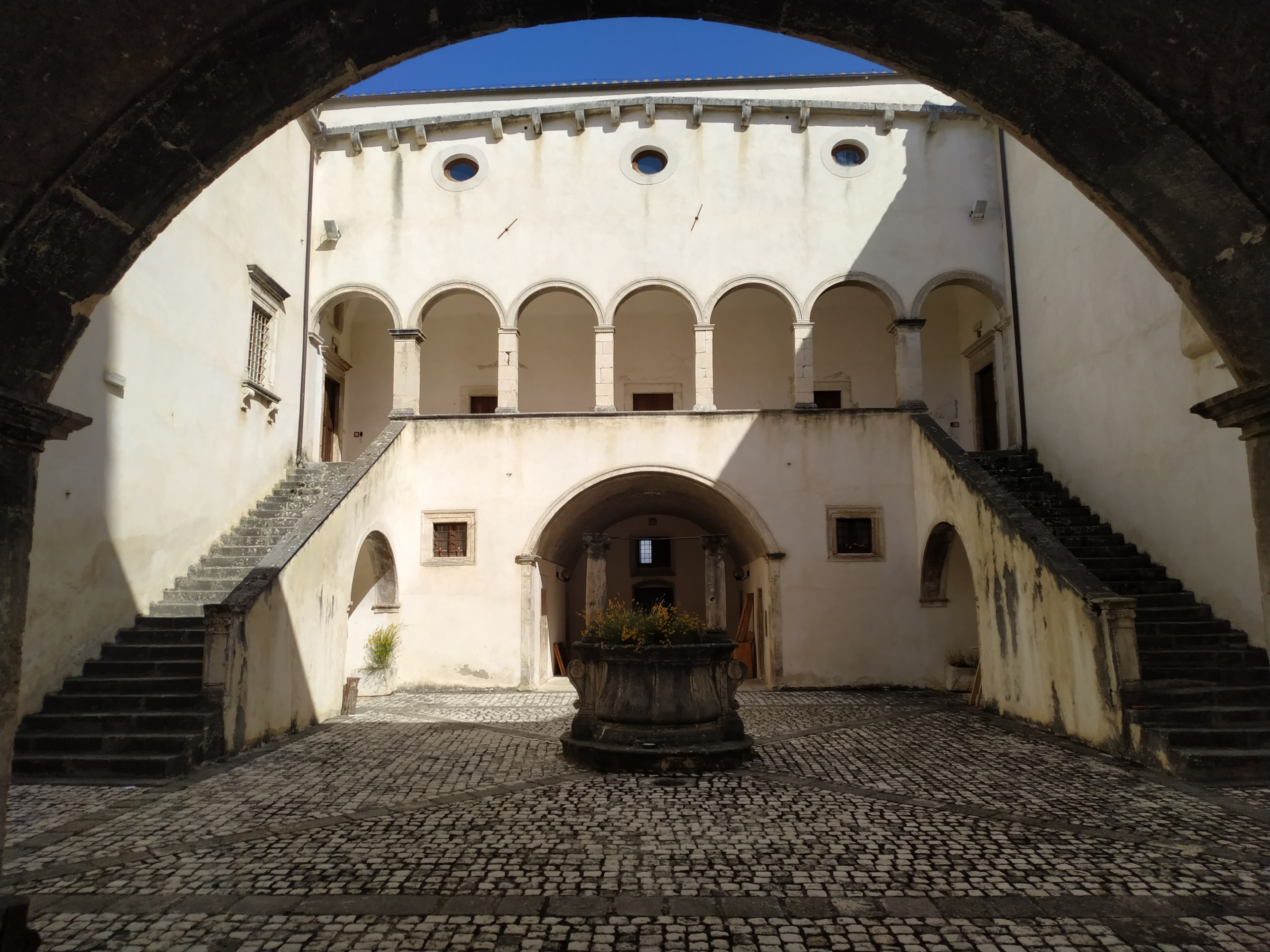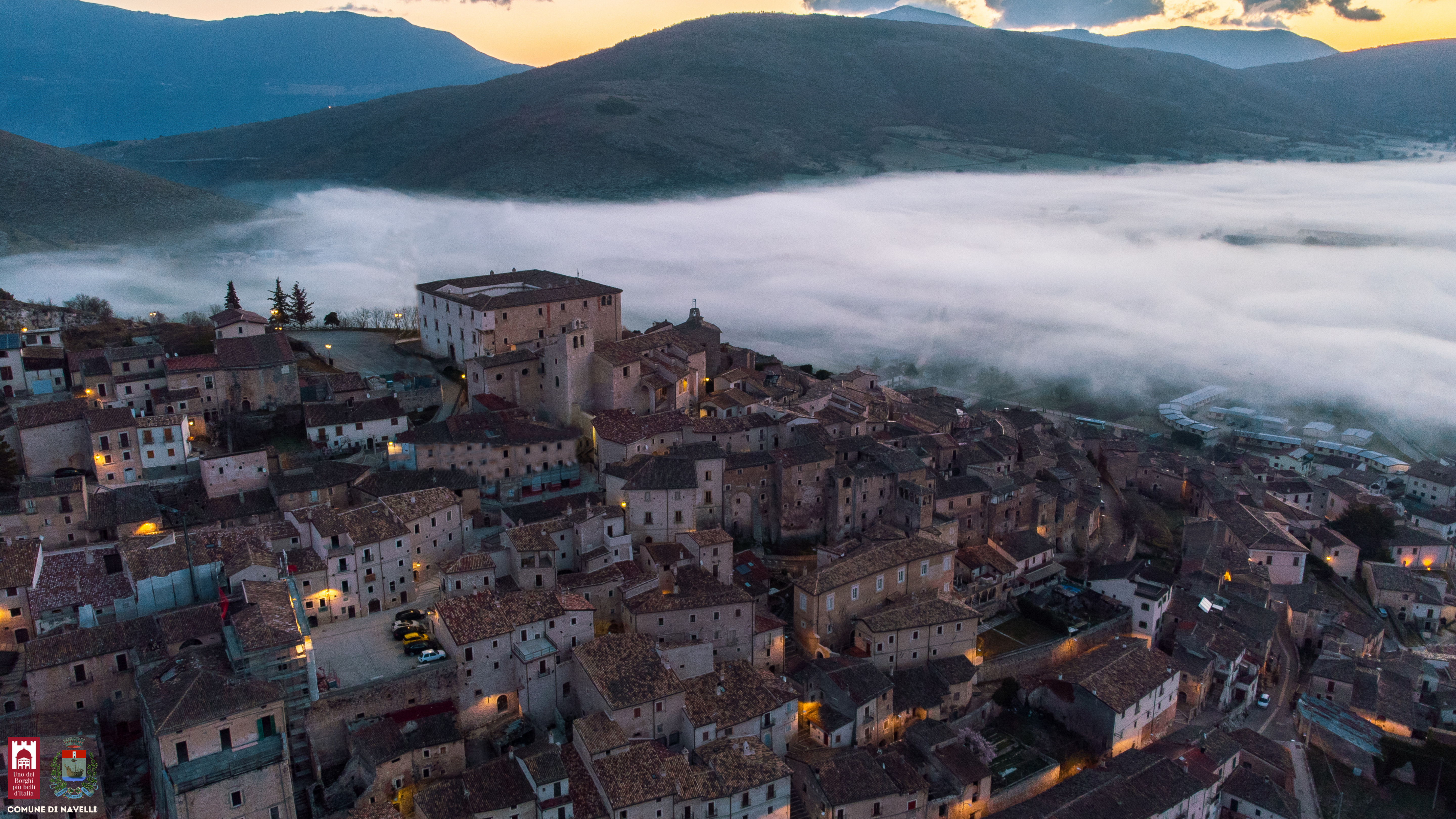In 1529, at the end of the dispute for the Kingdom of Naples between the crowns of Spain and France, L'Aquila, which had rebelled against the victorious Spaniards, was dismembered by them from its contado. Almost all the centres of the comitatus were then assigned to Spanish officials, Roman patricians and barons from L'Aquila: the fiefs of Navelli, Civitaretenga and S. Pio fell to Camillo Caracciolo with the title of baron. We know that the residence of the barons of Navelli was, at least in 1560, under Diomede Carafa, 'near the Public Gate towards L'Aquila, to the west of the Land' of Navelli, i.e. near Porta Santa Maria. The baronial palace, on the other hand, was probably begun under the other Caracciolo holder of the fief in 1587, Ettore. Work was not completed until 1632, the date carved in a small column of the well-cistern in the palace courtyard.
The baronial palace, better known as 'Palazzo Santucci', after the name of its last owners, is a quadrangular building with an inner courtyard, with typical elements of the late Renaissance fortified palace. In a single architectural structure, the residential function is combined with a defensive function, as evidenced by the solidity of the construction, the moat along the two western sides, the drawbridge, and the two garitte (protruding apparatuses with sentry functions) at the opposing corners of the palace, supported by corbels taken from the towers of the Angevin castle.
In the inner courtyard, on the western side, there is a two-flight staircase leading to the loggia and the large reception and living rooms of the owners. In the centre of the courtyard is the well-cistern, communicating with the external well at the rear of the palace. On the lower floor, the servants' quarters, while in the basement the storerooms where tools and food were kept.
Now owned by the municipality of Navelli, it has been fully restored and hosts conferences, exhibitions and cultural events. It is currently awaiting full restoration after the damage caused by the 2016-17 earthquakes.


